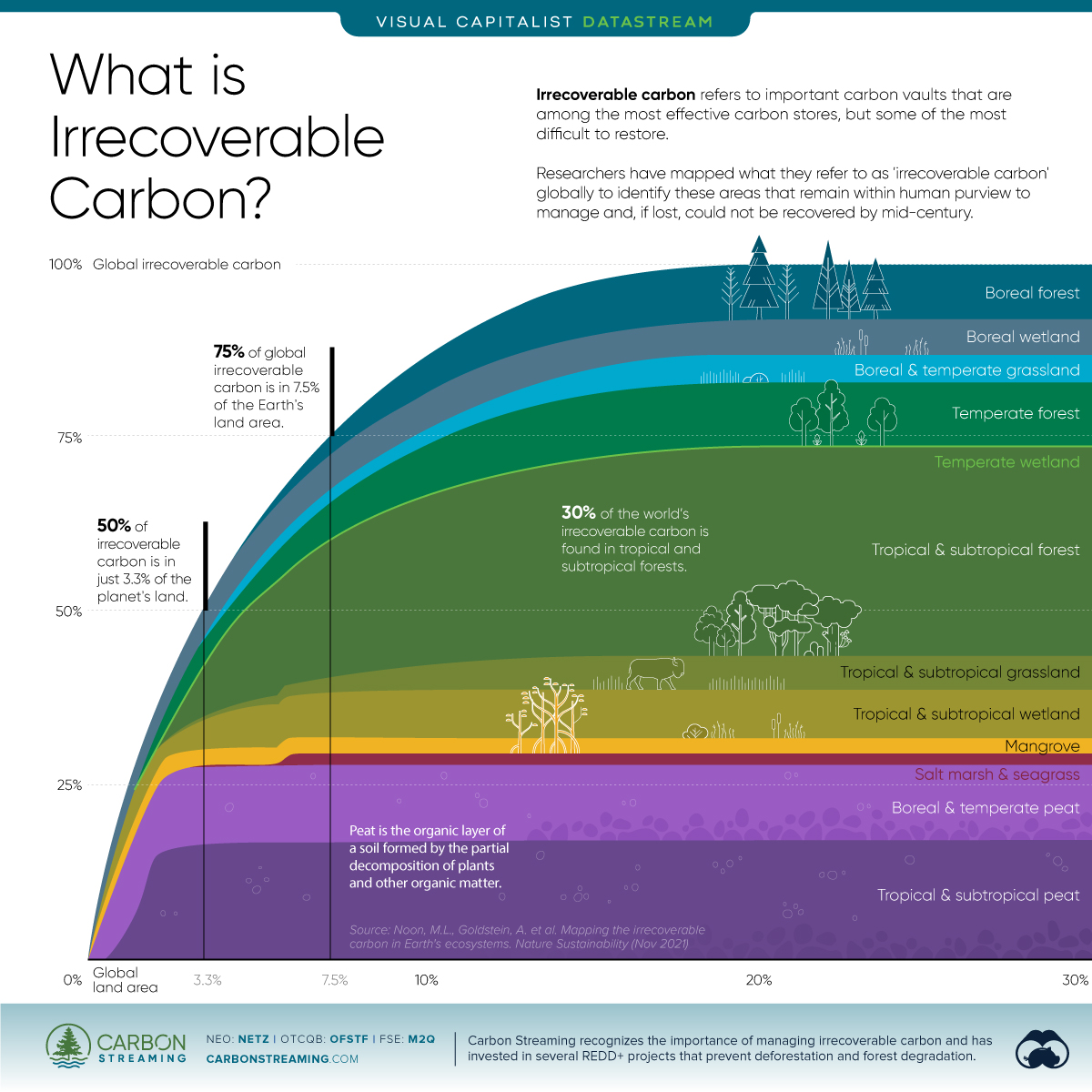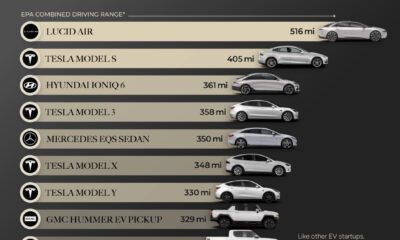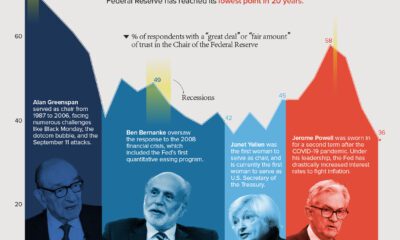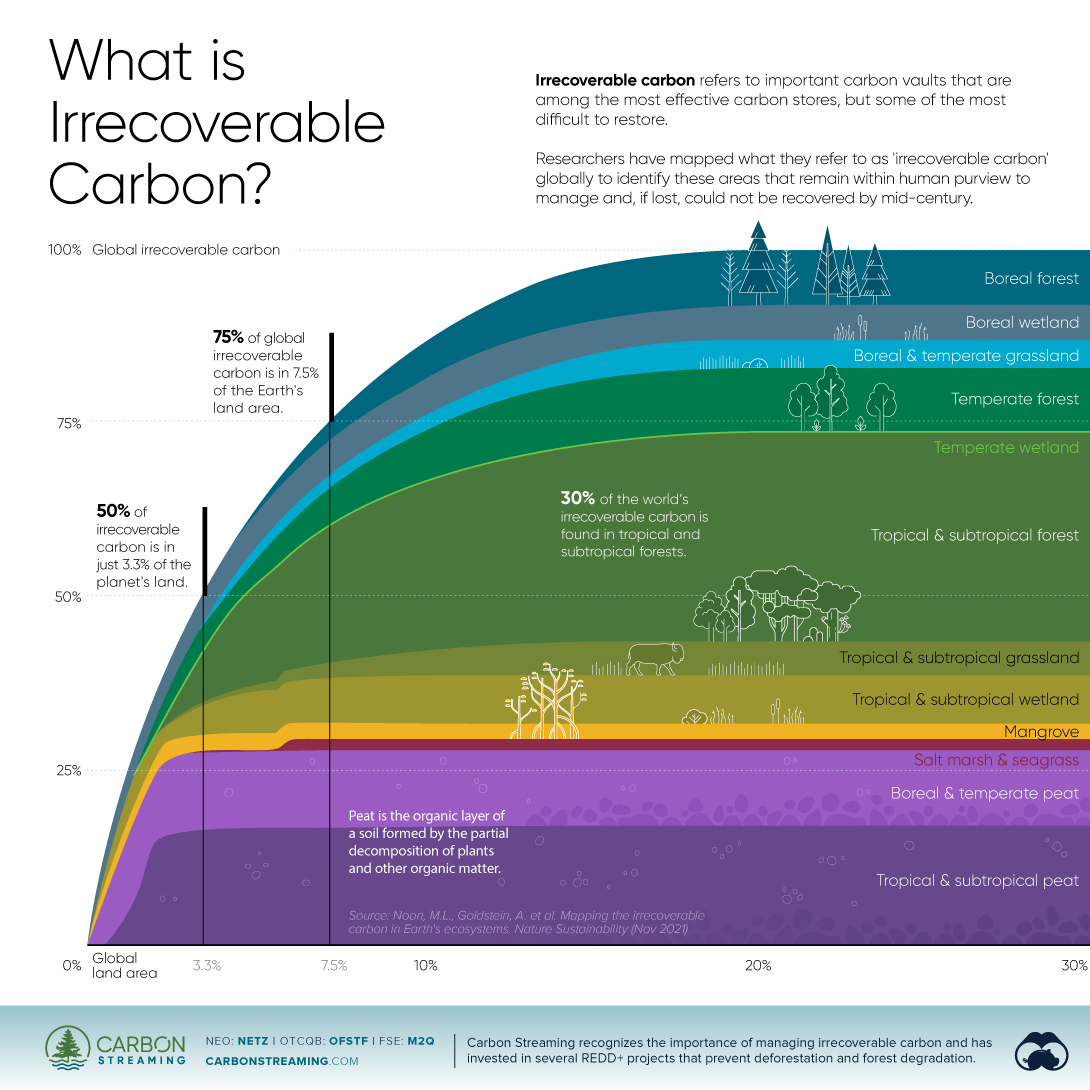Irrecoverable Carbon: The Importance of Preventing Deforestation
The following content is sponsored by the Carbon Streaming Corporation

The Briefing
- Researchers have identified natural places that the world cannot afford to lose due to their irreplaceable carbon reserves, which they refer to as “irrecoverable carbon”
- Nearly 50% of global irrecoverable carbon is found in forests
Irrecoverable Carbon: The Importance of Preventing Deforestation
The Earth is home to some natural ecosystems that function as carbon vaults, storing massive amounts of carbon. Researchers developed the concept of “irrecoverable carbon” to identify areas on the basis of three criteria relevant for conservation:
- Manageability: How they can be influenced by direct and local human actions
- Vulnerability: The magnitude of carbon lost upon disturbance
- Recoverability: The recoverability of carbon stocks following loss
Applying the three criteria across all ecosystems reveals that some places contain carbon that humans can manage, and if lost, could not be recovered by 2050, when the world needs to reach net-zero to avoid the catastrophic effects of climate change.
The above graphic sponsored by Carbon Streaming Corporation charts global irrecoverable carbon by land area, highlighting important ecosystems of stored carbon.
Breaking Down the Earth’s Irrecoverable Carbon
According to researchers Noon, M.L., Goldstein, A. et al., natural ecosystems contain around 139.1 ± 443.6 gigatonnes (Gt) of irrecoverable carbon globally. (Because the amount of stored carbon cannot be negative, the researchers restrained the uncertainty to 0–582.7 Gt.)
Here’s a breakdown of global irrecoverable carbon by ecosystem type:
| Ecosystem | Total Irrecoverable Carbon (Gt) | % of Global Total |
|---|---|---|
| Tropical and subtropical forest | 41.1 | 29.5% |
| Boreal and temperate peat | 23.4 | 16.9% |
| Tropical and subtropical peat | 15.8 | 11.4% |
| Temperate forest | 13.2 | 9.5% |
| Boreal forest | 11.3 | 8.1% |
| Tropical and subtropical wetland | 9.9 | 7.1% |
| Boreal wetland | 7.4 | 5.3% |
| Tropical and subtropical grassland | 6.5 | 4.7% |
| Boreal grassland | 3.8 | 2.7% |
| Mangroves | 3.2 | 2.3% |
| Salt marsh and seagrass | 1.7 | 1.2% |
| Temperate grassland | 1.6 | 1.2% |
| Temperate wetland | 0.3 | 0.2% |
| Total (rounded) | 139.0 | 100.0% |
Generally, forests are among the most important stores of irrecoverable carbon, accounting for nearly half of the global total. This is because they contain various carbon sinks including trees, soil, and other living biomass.
Tropical and subtropical forests alone store around 30% of global irrecoverable carbon. These include evergreen tropical rainforests near the equator, where billions of trees absorb CO2 for photosynthesis and growth.
Peatlands, organic layers of soil composed of decaying plants and biomass, also contain around 28% of irrecoverable carbon. Additionally, wetlands and grasslands are also significant carbon vaults, making up 21% of the global total.
Protecting Carbon Vaults with Carbon Credits
The 139Gt of irrecoverable carbon in these ecosystems remains within human purview to manage.
However, destroying or degrading these ecosystems would release this carbon into the atmosphere, making climate goals much more difficult to achieve. Since 2010, agriculture, logging, and wildfires have caused emissions of at least 4Gt of irrecoverable carbon.
One way to protect these areas is through the creation of carbon offset projects under the REDD+ (Reducing Emissions from Deforestation and forest Degradation) framework created by the UN Framework Convention on Climate Change (UNFCC). These projects work to protect and preserve these ecosystems by avoiding deforestation from commercial activities, such as logging or agriculture, or improving forest management practices.
Carbon Streaming recognizes the importance of these types of carbon credit projects in reaching net-zero by 2050 and has carbon credit streams in REDD+ projects around the world, including the Rimba Raya Biodiversity Reserve Project in Indonesia and the Cerrado Biome Project in Brazil.
Where does this data come from?
Source: Noon, M.L., Goldstein, A., Ledezma, J.C. et al. Mapping the irrecoverable carbon in Earth’s ecosystems. Nat Sustain 5, 37–46 (2022). https://doi.org/10.1038/s41893-021-00803-6
-

 Datastream10 months ago
Datastream10 months agoCan You Calculate Your Daily Carbon Footprint?
Discover how the average person's carbon footprint impacts the environment and learn how carbon credits can offset your carbon footprint.
-

 Datastream11 months ago
Datastream11 months agoThe 10 Longest Range EVs for 2023
This infographic lists 10 of the longest range EVs currently for sale in the U.S. in 2023. The Lucid Air takes first place at 516 miles.
-

 Economy11 months ago
Economy11 months agoCharted: Public Trust in the Federal Reserve
Public trust in the Federal Reserve chair has hit its lowest point in 20 years. Get the details in this infographic.
-

 Datastream1 year ago
Datastream1 year agoHow Gen Z Feels About Its Financial Future
Despite the looming uncertainty, members of Gen Z maintains an optimistic outlook about their financial future
-

 Datastream1 year ago
Datastream1 year agoMore U.S. Tech Companies are Adopting Unequal Dual-Class Voting Structures
Dual-class share structures are rising in popularity, and they give executives much more voting power within a public company.
-

 Datastream1 year ago
Datastream1 year agoThe Link Between Entrepreneurship and Mental Health Conditions
Research explores the link between entrepreneurship and mental health conditions such as ADHD and bipolar disorder


